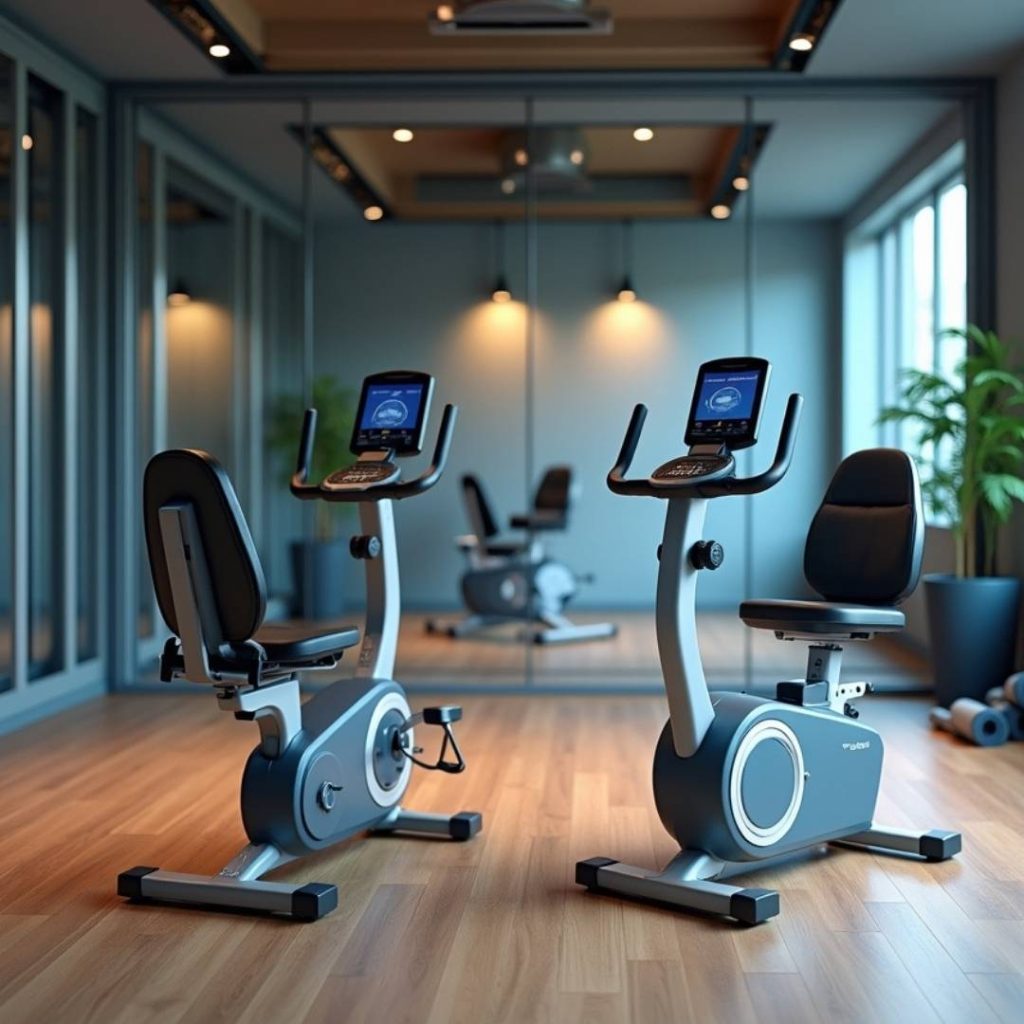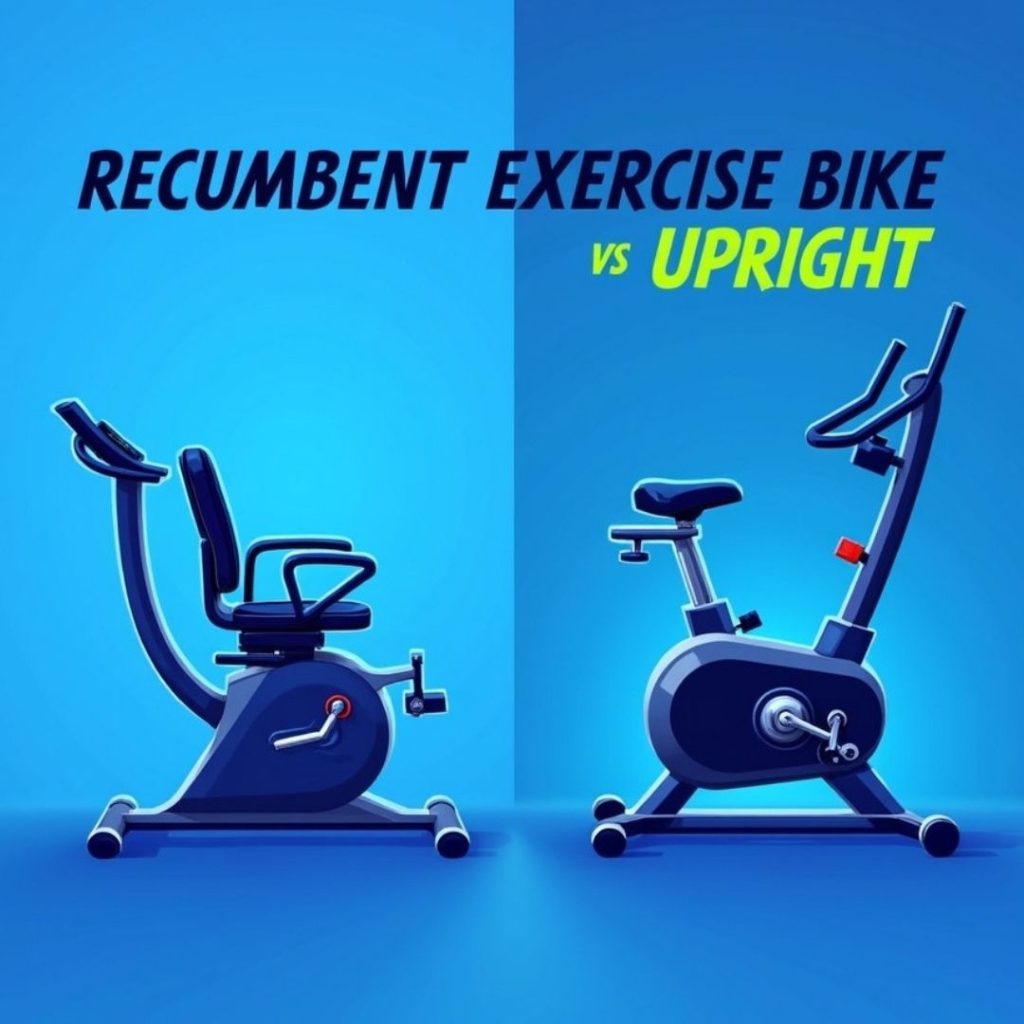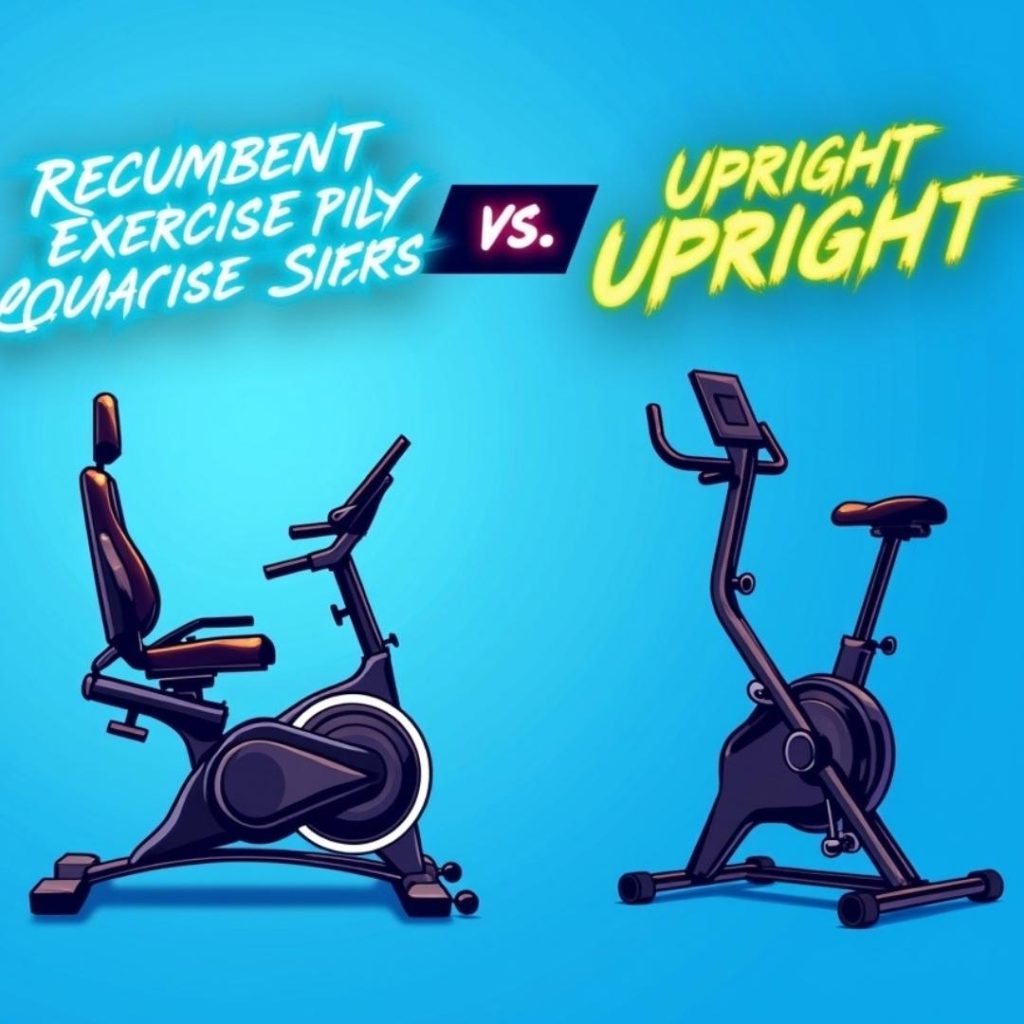Introduction
Recumbent Exercise Bike vs Upright: Battle of the Bikes. One question that often comes up in a gym’s members’ minds when talking about exercise bikes is whether they should get a recumbent bike or an upright model. There are pros and cons to each, and considerations, including your comfort level, fitness goals, and home space, typically play a role in making your choice. This in-depth comparison takes a look at the pros and cons so you can match yourself up to the proper workstation for your workout.

Comfort First-What’s It Like to Wear Them?
If comfort is a top concern, then recumbent bikes frequently rank out on the top. These bicycles come with big cushioned seats and backrests that support you in a laid(back) position while you pedal. This design is specifically ideal for those prone to back pain, joint problems, or limited mobility, as it reduces back strain and encourages good posture. The reclined body position of semi-recumbent bikes enables you to get so much more out of your cardio workout without having to put in extra time.
By contrast, an upright bike feels more like riding a real bike you’ve taken outside. The riders are more upright, hunched forward and grabbing the handlebars. Bare Bones road bikes usually offer short, hard seats that are perfect when you’re pedaling for 20 minutes but can chafe after a few hours. They might not be quite as supportive as recumbent-style designs, but the seated position still offers a dynamic workout that engages the core and upper body far more than you would on the more laid-back designs.
Select depending on your fitness objectives, needs, and choices. If you’re looking for low-impact exercise, a smooth, consistent workout, or rehabilitation of a knee or joint, a recumbent exercise bike is ideal. If, on the other hand, you’re in the market for something that feels a little more like traditional cycling and/or one that’ll work for more muscle groups, you may want to consider an upright bike.
Takeaway? In terms of comfort and support, recumbent bikes are tough to beat. But if you like a more active, interactive workout, bartop models get the apps — and the features and the feedback — you cravehttps://en.wikipedia.org/wiki/Crave_(streaming_service).
Meaningful Design Differences
Recumbent and upright bikes each have their unique design quirks that will affect how you sit when you exercise, as well as how your body gets engaged. Recumbent Bike Recumbent bikes have a laid-back, or reclined, design with the seat positioned horizontally. This kind of layout puts you closer to the ground, and the position gives you a comfortable seat and backrest at the same time. This type of construction provides not only better lumbar support but also takes the pressure off the joints. Hence, it’s perfect for those who want to feel safe and comfortable, especially those who have limited mobility, suffer from back pain, or have issues with their joints.
Upright bikes, on the other hand, are small and vertical, similar to regular road bikes. The smaller seats of these bikes prompt the rider to approach exercise in the same position as they would when using traditional outdoor bikes. This configuration places more load on the core and upper body to make your work harder. Because upright bikes replicate the intensity of riding a real bike, they’re great for those looking to work multiple muscle groups (legs, core, back) at once and push their overall workout limits for a more personalized and focused session.

The design difference also affects the intensity of your workout. Since a recumbent bike is a more relaxed position, it puts less stress on muscles and lets you do low-impact cardio or even steady-state cardio for longer amounts of time. Upright bikes, on the other hand, are a better choice for shorter and high-intensity intervals or for those who prefer to sit more upright the same way they do on the road.
Takeaway? Recumbent bicycles are all about comfort and ergonomics. If you’re looking to work your muscles more and simulate outdoor cycling, however, upright bikes are the way to go.
Health Benefits Worth Noting
Recumbent and upright exercise bikes are known for their cardiovascular and heart-health benefits, their ability to improve endurance , and help with weight management. But the way they work your muscles — and how hard they work them — can be different, depending on how they’re made and what you want.
Recumbent bikes are especially easy on the joints, so if you have arthritis —or are rehabbing an injury—their seated theme is more than just about comfort. Thanks to its in-exercise recline feature and support from the wide seat pad, they both reduce knee and hip stress, giving you a consistent workout. These bicycles are mostly for the lower body and work muscles such as the glutes, hamstrings, and quads. They might not torch as many calories as higher-intensity choices. Still, the high-back, fully supported position of a recumbent bike makes for longer workouts—which accumulate over time, leading to better cardio fitness and more calorie burn.
Upright bikes, however, offer a less stable workout that utilizes more muscles. The upright stance forces you to stabilize your body by using your core and your arms and shoulders as you hold onto the handlebars. So, upright bikes are great for anyone who wants a well-rounded workout. Plus, they’re able to replicate outdoor cycling, which means the workouts are more intense, translating to burning more calories in less time.
Takeaway? If low-impact, joint-friendly cardio is your goal, the recumbent bike is a great choice. If you want something that allows for a more intense workout – involving not just the legs but the upper body as well, then the upright bike is the way to go.
Who’s Riding? Target Users
The recumbent vs upright bike is for different kinds of people with different goals, preferences, and health concerns. Recumbent bikes are liked for their comfort and are more appealing to seniors, beginners, and anybody who’s RECOVERING from injuries. With angled seats and armrests, the REPOSE LIFESTYLE offers seating and backrest support that is non-obtrusive to your joints, with backrests that are catered to provide comfort while you kick back and relax. Since recumbents provide a low-impact workout, they are easy on the knees and hips, making it possible for a user to get more breakfast without the eggs. This style of bike is also good for those looking for a more laid-back, not to mention effective, form of cardio that targets the lower body.

On the contrary, upright bikes are great for advanced fitness lovers, athletes, and those people who are in search of intense workouts. In design, it is meant to simulate outdoor cycling by leaning the user forward and working out their core. Upright bikes further make use of balance and coordination, involving more muscle groups that require the upper body. That makes them a great option for people who like a little more variety in their workouts and want to have the chance to burn more calories in less time. (They’re also great for cyclists who want to train indoors and keep up their performance during off-seasons.
Takeaway? If you are a senior citizen, a beginner, or are recovering from a past athletic endeavor, you are going to love the comfort and accessibility of a recumbent bike. But for outdoor enthusiasts and those in search of an intensive, full-body workout, the upright bike is the perfect selection to reach your fitness goals.
Your home gym space that you need
Upright Bikes: Upright bikes are smaller and lighter than recumbent bikes; they are space savers for those who live in apartments and smaller homes. Recumbent bicycles, on the other hand, but due to their long framed design, can be a bit heavier. They are a little on the large side, though, which could make them more difficult to use in small homes or apartments.
Takeaway: Limited on space? An upright bike would be the better choice. But if space isn’t a concern, consider a recumbent bike.
Weighing the Costs
In terms of price, upright bikes are usually cheaper than recumbent models. The latter’s additional features, like reclining seats and lumbar support, typically make it more expensive. That said, both kinds of TVs exist in the budget price range depending on the brand and spec level.
Takeaway: Stay within your budget and consider which features are most important to you.
Workout Intensity and Variety
Upright bikes can give you a more intense workout since you can stand up while you pedal, using not only your legs but your entire body, and you can mimic outdoor cycling. Recumbent bikes are great for low to moderate-intensity workouts and great watchers for calorie burning with no overexertion.
Takeaway: If you’re after high-intensity interval training (HIIT), the upright bike wins. If durability and comfort are most important to you, then the recumbent bike is the way to go.
Staying Safe While You Ride
Recumbent bikes are the safest exercise bikes since their construction is stable. The benefit is that you don’t have to balance, and you’re already in a safe seated position, so the risk of an accident is extremely low. Upright bikes tend to be harder for people with balance issues because they require more coordination and control.
Takeaway: If safety is a main priority, the recumbent bike provides a lower-risk workout, especially for first-time exercisers and people with physical limitations.
Versatility in Workouts
Both machines come with multiple resistance levels and pre-programmed workouts, yet upright bikes offer enhanced versatility in terms of cycling positions. Recumbent bikes are the most comfortable, but they limit you to a seated workout.
Takeaway: Upright for versatility or recumbent for steady, no-nonsense cardio.
Maintenance Needs
Upright and recumbent bikes are not very high-maintenance, but the big difference is wear and tear. The smaller seats and handlebars on stationary bikes may wear out quicker due to heavy or frequent use. Recumbent bikes also have a reputation for lasting because the machines tend to be of solid, laid-back design.
Takeaway: Both options are low maintenance, but consider warranties and user experience to ensure quality.

Final Thoughts
Whether you choose a recumbent bike versus an upright bike is really a matter of preference, lifestyle, and fitness goals. When you are in the mood for some comfort and joint-friendly cardio, reach for the recumbent bike. But for someone who wants a high-calorie burning, full-body workout with less profile, the upright bike is the better option. Take these trade-offs into account, and you’re sure to find the perfect ride for your fitness goals!

